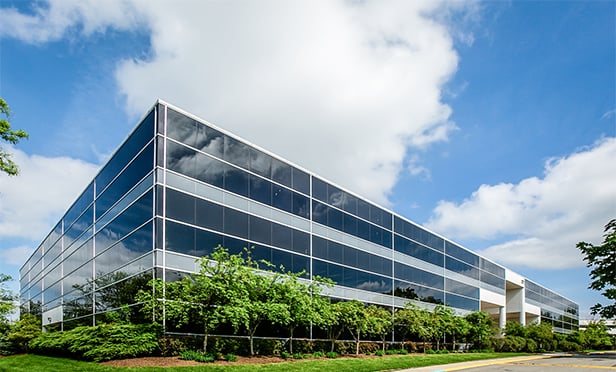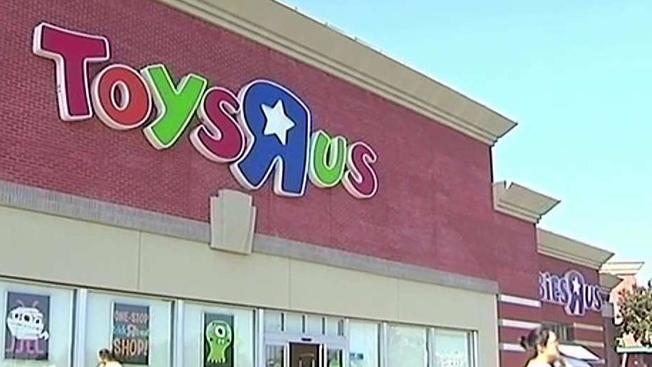
More than $700 million worth of industrial properties fell into trouble in February, upping the total outstanding distress to $6.8 billion by the end of March, according to Real Capital Analytics' latest figures. Workout activity of just $58 million did little to offset the second largest monthly increase this cycle in the inventory of distressed industrial properties.
But the sector is still faring considerably better than other asset classes-with office, retail, apartments and hotels posting distress figures between $25 billion and $33 billion. What's more, industrial accounts for only around 5% of outstanding CMBS balances. The sector's strength is due largely to a lack of hot money in the market during real estate's mid-2000s heyday and a willingness to work through troubled loans. But it's also left investors cooling their heels with few purchasing prospects.
Even February's jump in troubled assets is partially due to the addition of two $100-million portfolios to the distressed inventory-a 12-property pool in the Midwest, which is owned by the Mirvac Group and James Fielding Funds Management, and a second six-property, Kirkman Kennedy Edgewater-controlled bundle in Orlando and Memphis.
"Most of the trouble in industrial is connected to economic factors such as lost tenants rather than actual debt," says New York City-based RCA's senior market analyst, Ben Thypin, who believes industrial will continue to stay on the low end in terms of distress. The fundamentals are better for industrial, agrees Conrad Andersen, EVP and managing director of financial services assets management at Grubb & Ellis Co. in Newport Beach, CA. "Although the port business has been impacted, most industrial product is located in key submarkets that weren't oversupplied," he says, adding that the vacancy factor, pre-downturn, was in the single digits.
Unlike office, industrial investors were not accumulating trophy properties and then flipping them into a large portfolio. "Industrial buildings are often more prosaic," says Thomas A. Fink, managing director of New York City-based commercial mortgage research provider Trepp. "These properties do not tend to be trophy buildings. There are only so many people in the world who get excited about 30-foot versus 35-foot clear heights."
But that is not to say there is no stress in the market Most of the nearly $2 billion worth of distressed industrial assets are concentrated in Michigan, Illinois, Florida, California and New Jersey. But these figures can be misleading. In California, for instance, only 2% of the state's almost $7 billion worth of outstanding CMBS is delinquent Meanwhile, nearly one- third of Rhode Island's comparatively puny $70 million in outstanding loans is delinquent According to Fink, the industry is being hit the hardest in the upper Midwest, where properties were predominately owner/user-owned assets such as heavy manufacturing facilities.
"In Chicago, there are a number of extra boxes ranging from 300,000 square feet to over one million square feet," adds locally based John Huguenard, managing director and co-head of Jones Lang LaSalle's national industrial investment sales practice. "The larger assets are having problems, but most of the institutional owners have been able to hold onto them because they are investing rescue capital," he says.
This focus on fixes is not unusual in to day's market and, in fact, as lenders gain both perspective on their holdings and guidance from federal regulators on handling workouts, the pace of resolutions, and especially restructurings, has picked up. Confronted with piles of bad loans, lenders nationwide have demonstrated a reluctance to file foreclosure suits, which can be costly and time-consuming, notes Thypin. Of the nearly $30 billion worth of restructurings since the beginning of 2009, a full two-thirds have occurred in the past two quarters. "We're seeing everything from a principal reduction to deals requiring borrowers to inject fresh equity or find an external capital partner," he says.
Industrial loans are even more likely to be worked out than other asset classes, relates Huguenard, because "the banks believe in the product." He predicts industrial loans will continue to be modified and pushed out until the market improves to the point where a foreclosure does not make sense. Part of what is bolstering these loans is the low interest rate environment, where the debt is floating rate and puts less pressure on borrowers to make mandatory payments. "We'll see how long that lasts," says Paul Griesmer, senior managing director in the Real Estate Advisory Group ofFTI Schonbraun McCann Group in New York City. He adds that there have been some recent indications interest rates could start to tick up in the near future.
Reduced rates aside, the sheer complexity of the $3.2 trillion worth of commercial real estate debt-one-third of which is securitized-has also been dragging out the process. "Participating debt and mezz debt have been around for years, but there's so much more of it this time around," says Griesmer. What's more, the securitized loans are bound to Real Estate Mortgage Investment Conduits underwriting requirements, which means "once you foreclose, you cannot provide a facilitating loan," says Andersen. Add to this a lack of liquidity in the capital markets for commercial real estate, and most conduit servicers have been slow to foreclose, opting instead to reposition or sell industrial properties, or sell the note once it's defaulted, usually under the auspices of receivership. But this lack of velocity is not tied solely to securitization. RCA also found that lenders' strategies vary based on the size of the property, with lenders more likely to sell off small properties and hold onto large ones until real estate market conditions recover. Almost half of the troubled real estate worth less than $10 million has been sold or is on the market, while 75% of the properties valued above $25 million are being kept on the balance sheet, the firm says. This could also be due to the fact that nearly every loan north of $30 million-and in some cases, $20 million-has been syndicated. "We are seeing syndications with six to 10 participants and nobody can agree on anything," Andersen relates. What this means, of course, is that consensus on a disposition strategy is challenging, at best. "We really only see a mark to market with the portfolio loans south of $20 million," he adds. And a majority of these are held with federally chartered institutions, as many savings banks cannot so much as utter the words "mark to market" without going out of business. "Their process has been very incremental," says Andersen. This is bad news for buyers, who have lined up looking for product. "Investors are always willing to buy industrial buildings," says Fink. "They create a good, steady cash flow. And they are general purpose enough to be repositioned and repurposed for the next user because an empty space is an empty space." But since REO opportunities are hard to come by, most of the offers are through note sales, and even these are on the low end. "There is a tremendous amount of buyers for industrial and they are frustrated that there hasn't been more distressed asset sales," says Huguenard. "Investors created funds to buy these assets, but it hasn't panned out at all."
GlobeSt.com News Hub is your link to relevant real estate and business stories from other local, regional and national publications.
© Touchpoint Markets, All Rights Reserved. Request academic re-use from www.copyright.com. All other uses, submit a request to [email protected]. For more inforrmation visit Asset & Logo Licensing.






